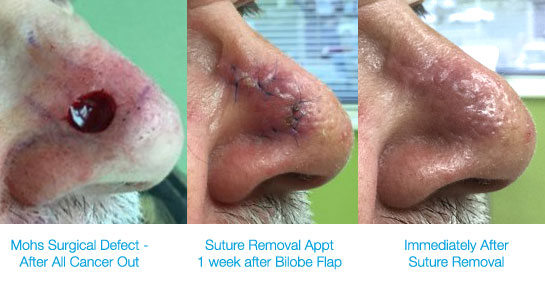
Reconstruction Frequently Asked Questions:
1. Do I need to see a plastic surgeon for reconstruction?
No, not usually. In fact, fellowship-trained dermatologic surgeons spend 1-2 years after their residency (which also includes comprehensive surgical training) focusing on skin surgery and reconstruction. Generally, this additional focused surgical training results in more training in skin repair than any other specialty.
Dermatologic surgeons do complex reconstruction of facial wounds, skin flaps, and skin grafts. The vast majority of these procedures are done under local anesthesia in the office setting. Occasionally, a plastic surgeon, oculoplastic surgeon, otolaryngologist, or surgical oncologist will be coordinated with for the repair of larger wounds based on patient and physician preference.
However, if you prefer to see another surgeon for your reconstruction, we can refer you to some excellent ones.
Dr. Molenda is a fellowship trained dermatologic surgeon. To find other fellowship trained dermatologic surgeons, please visit: http://acms.execinc.com/edibo/SurgeonFinder
2. What is the difference between a dermatologic surgeon and a plastic surgeon?
Plastic surgeons typically deal with repairing trauma repair and larger surgeries that require general anesthesia (e.g. breast reconstruction, breast implants). Some even do bone repairs such as hand trauma.
Dermatologic surgeons, on the other hand, typically perform their surgeries under local anesthesia, often in an office setting. Local anesthesia has many advantages for patients because it is safer, less expensive, does not require fasting, and does not carry the risks associated with general anesthesia. Fortunately, nearly all non-melanoma skin cancers (basal cell carcinoma, squamous cell carcinoma) can be removed and reconstructed safely in an office-based setting by a dermatologic surgeon.